Some of the companies who come to us for small plastic parts in Colorado simply need the finished part from the plastic injection molding process. Many others, however, want or need to have additional actions performed on their parts. These actions are what are known as “secondary services,” and they can be critical to a customer’s plastic injection molding project.
Why Secondary Services?
Secondary services may be required to meet the functional or cosmetic (typically branding or labeling) needs of a plastic injection molding project. The necessity of the additional services may be determined by the design complexity or cosmetic requirements. In other cases, the cost of automating several functions in one step may require more upfront capital than breaking the problem into two or more manufacturing activities.
Common Secondary Services
The list of secondary services that can be performed on a small plastic part is virtually endless. Due to the innovative products that need parts and the constantly evolving technology used to create those parts, operations that nobody has even thought of today may be requested tomorrow. That said, there are some secondary services that are more commonly needed. They include:
- Ultrasonic welding. Ultrasonic welding uses high-frequency ultrasonic acoustic vibrations to create a solid-state weld between two components. It is especially useful in joining dissimilar materials. It can also be used to place metal inserts into plastic parts after molding.
- Heat staking. In heat staking, metal or threaded inserts are placed into plastic parts after the injection molding process is complete, using heat and pressure to position the insert.
- Pad printing. In pad printing, a steel plate with an etched design is loaded with ink that is then transferred to a molded plastic part. The process can be used to quickly and efficiently add a logo, part number, instructional graphics, or other words or images to a part.
- Hydrographic imaging. Also known as hydro printing, hydrographic printing, hydro dipping, water printing, and water dipping, hydrographic imaging is used to apply a wide variety of designs (camouflage, wood grains, brushed metal, stone, and marble to name just a few) to a plastic part.
- Hard form in-mold labeling (IML). IML uses a printed label that is positioned in a mold prior to the injection of the molten resin. When the plastic fills the mold, the label becomes permanently adhered to the part.
- Laser etching and part marking. Laser etching involves marking a plastic part with a laser to create a contrasting image or text.
At AIM, we have extensive experience in all of these secondary services and can provide insights on when and how they are best used.
Start-to-Finish Small Plastic Part Manufacturing
Whether you simply need completed small plastic parts right out of the mold or have a project that calls for secondary services, we have the technology and the know-how to ensure you get exactly the end result you’re looking for. Let’s talk about your requirements on a call, or better yet, over a cup of coffee. We look forward to learning about your small plastic part injection molding project.

 SINCE 1993 MADE IN USA
SINCE 1993 MADE IN USA 


